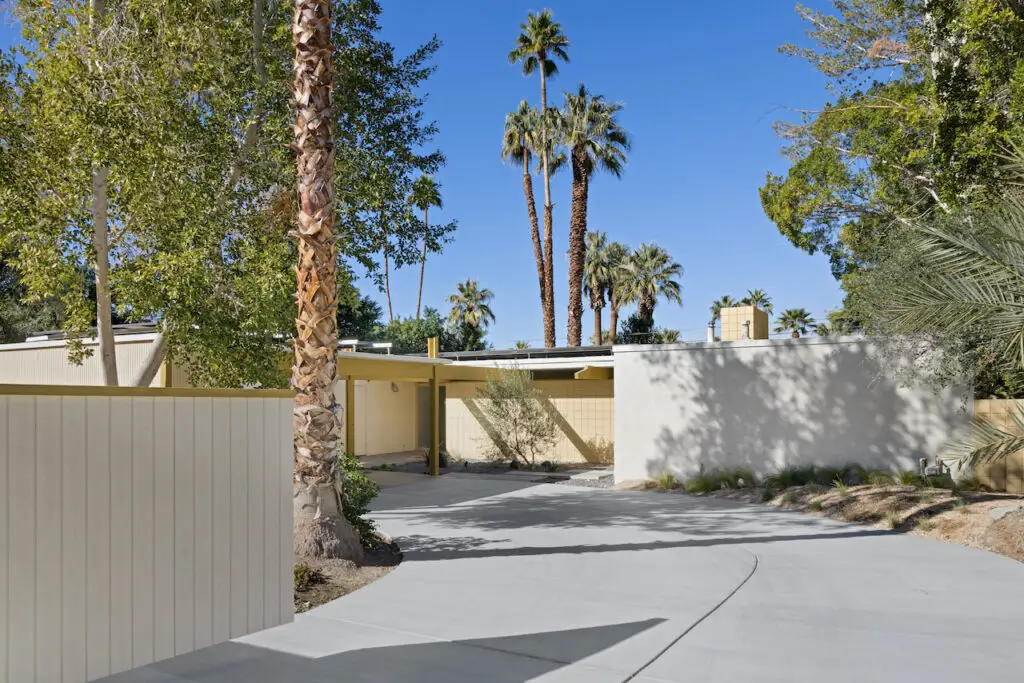
In 1962, architect Hugh Kaptur designed this house in Palm Springs that mirrored the style of Donald Wexler, with whom Kaptur had briefly collaborated. This home remained with one family from 1975 until its recent rediscovery and restoration, an effort that involved consultation with Kaptur himself.
Key to the revival of this mid-century gem were Szalay’s staging expertise and Chris Salay Design, which took charge of the refurbishment, styling, and construction. Furnishings included Jens Risom chairs, a Hans Wegner bar cart, and a George Mulhauser lounge chair with ottoman, complemented by Tait outdoor furniture.
Despite its prolonged neglect, the house retained much of its original character, making it an ideal candidate for restoration. With a background in interior design and architecture, the renovator approached the project with a keen eye for authenticity, focusing on preserving original design elements.
The house had seen a few non-original additions, such as covered patios and altered breezeways. A previously enclosed patio, used for storage, was among these changes. The kitchen and bathrooms, though worn, provided a valuable reference for restoration, guiding the team on layout, materials, and color schemes.
Original kitchen laminates, remarkably consistent over the years, were matched in the renovation. The master bathroom posed a significant challenge, particularly in restoring the deteriorating tile and hardware. A meticulous process was undertaken to revitalize the existing mosaic tiles, culminating in a gentle muriatic acid treatment and careful re-grouting.
During the restoration, the discovery of the original color scheme – beige, gold, and avocado/olive tones typical of the era – was a critical element. These colors played a significant role in defining spaces and aligning the house with current design trends.
Post-restoration, the home has attracted attention from other Hugh Kaptur homeowners, some with similar floor plans. Kaptur’s design signature – using single score concrete blocks, expansive windows, and distinctive beam details – creates spacious yet intimate indoor/outdoor living areas.
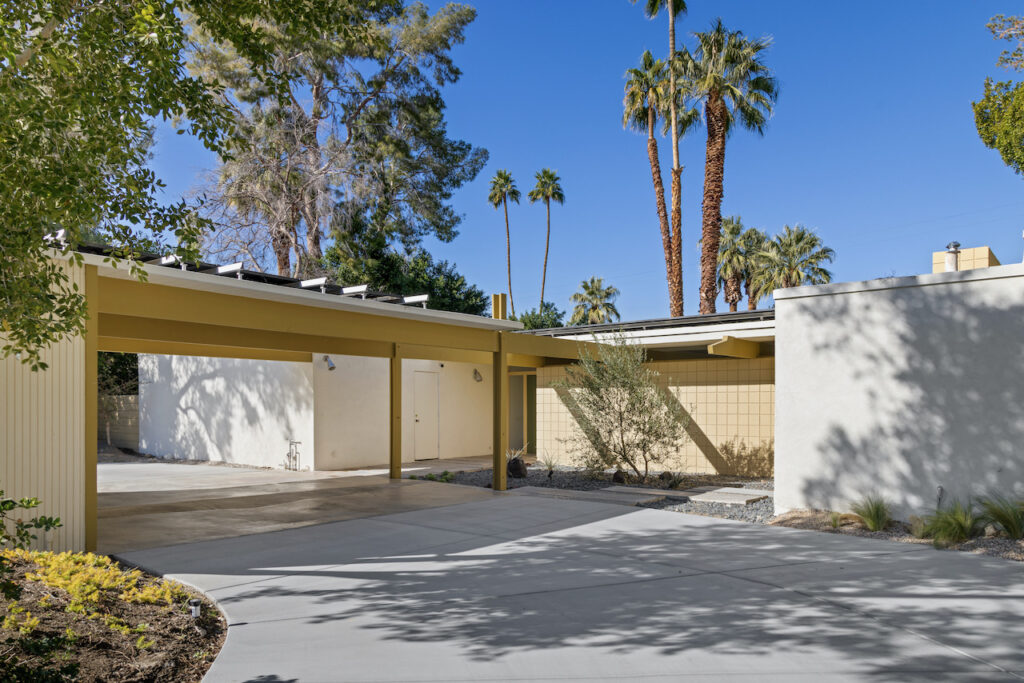
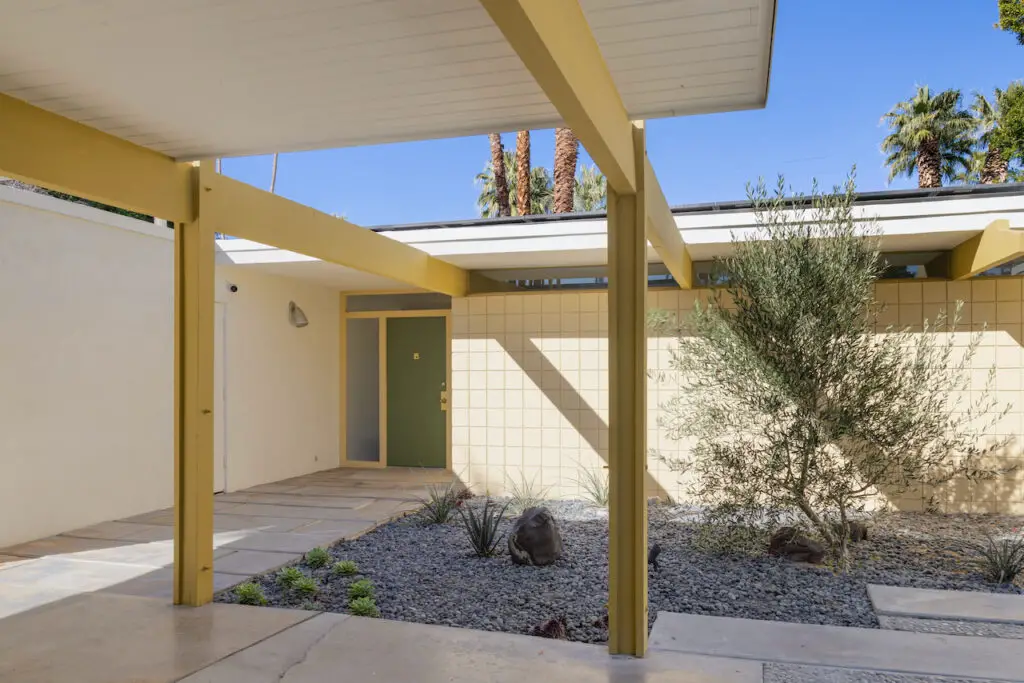
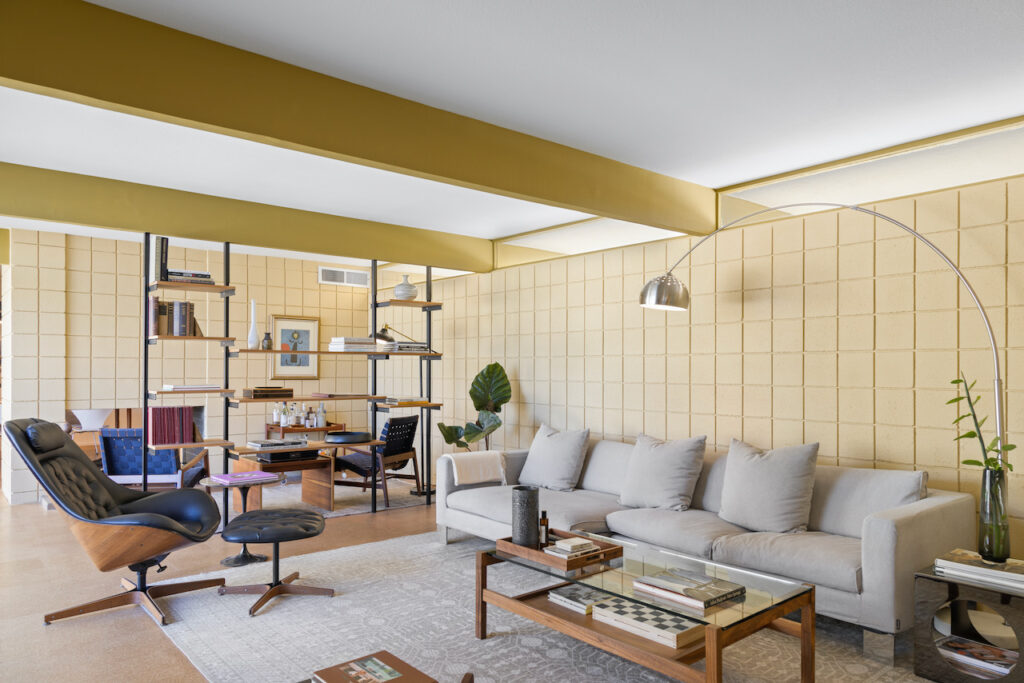
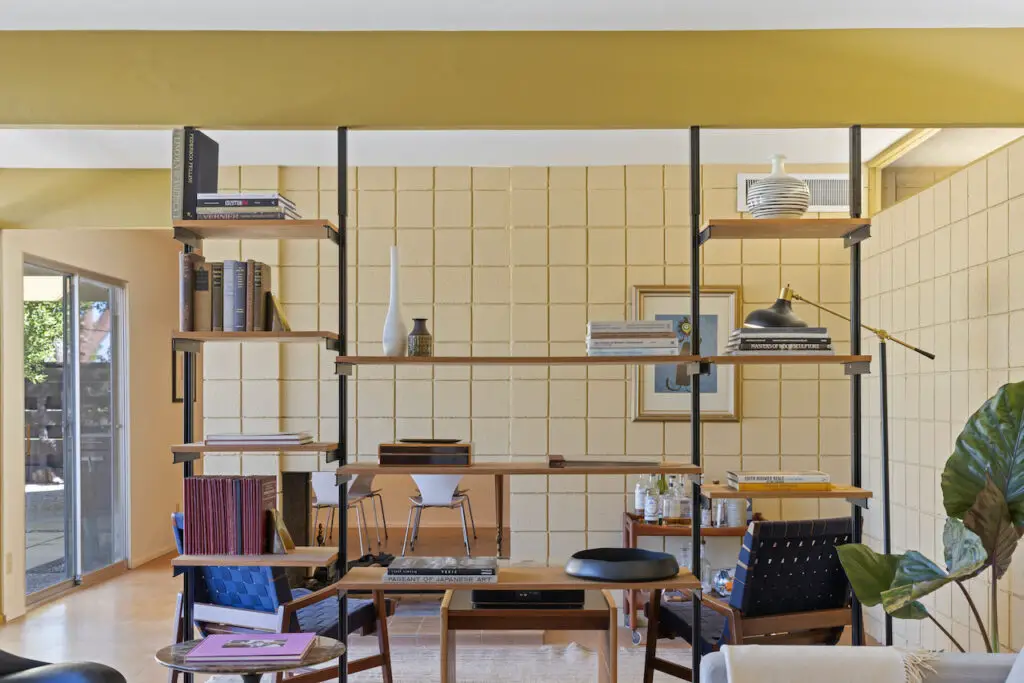
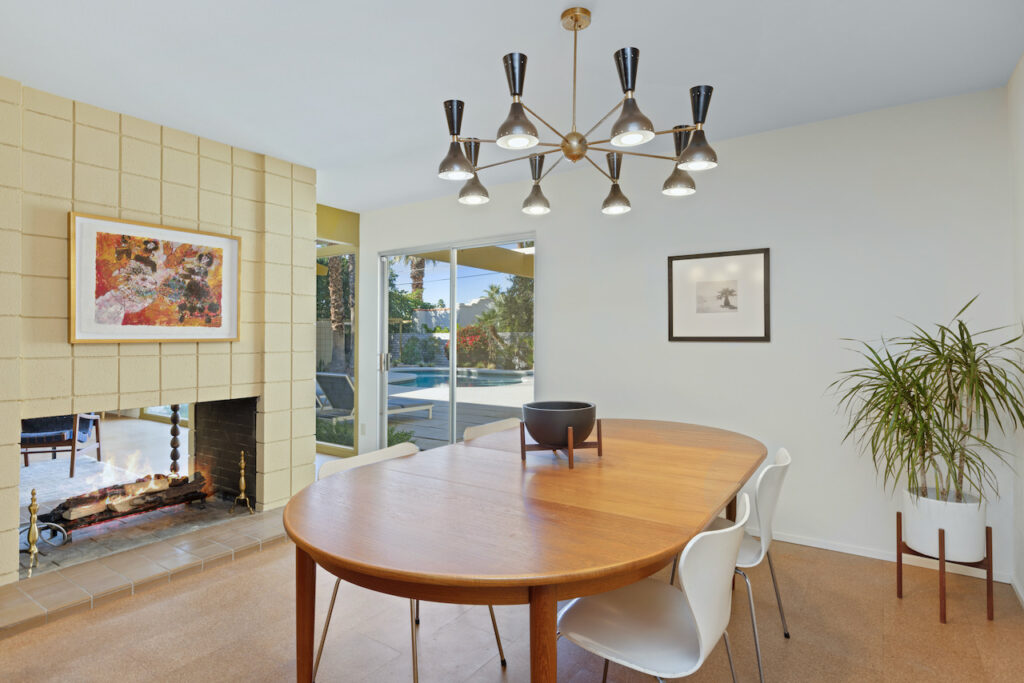
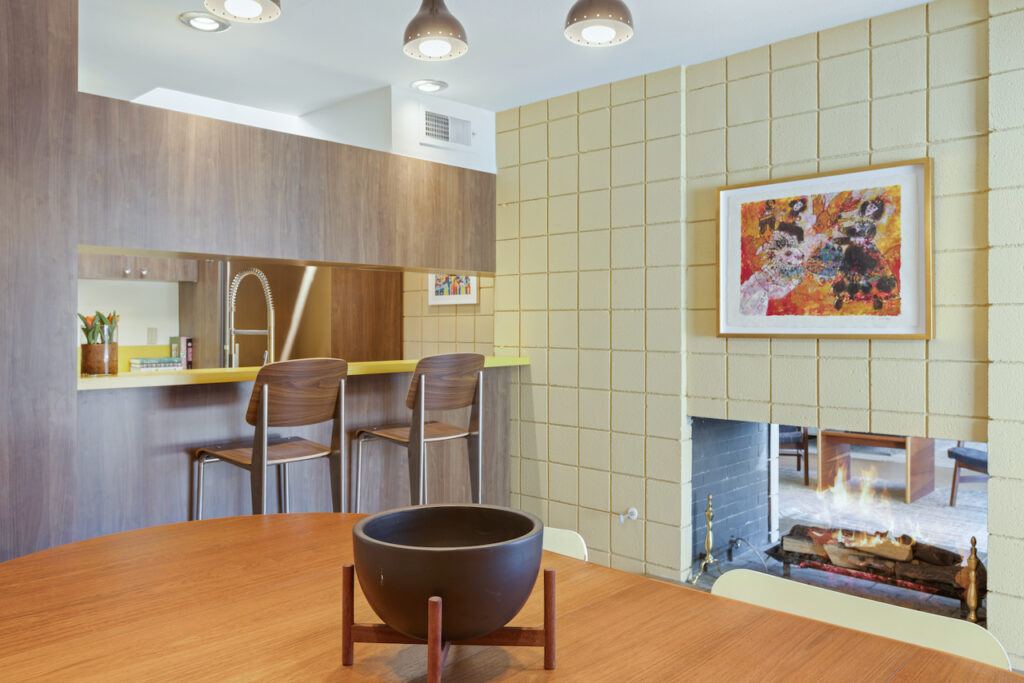
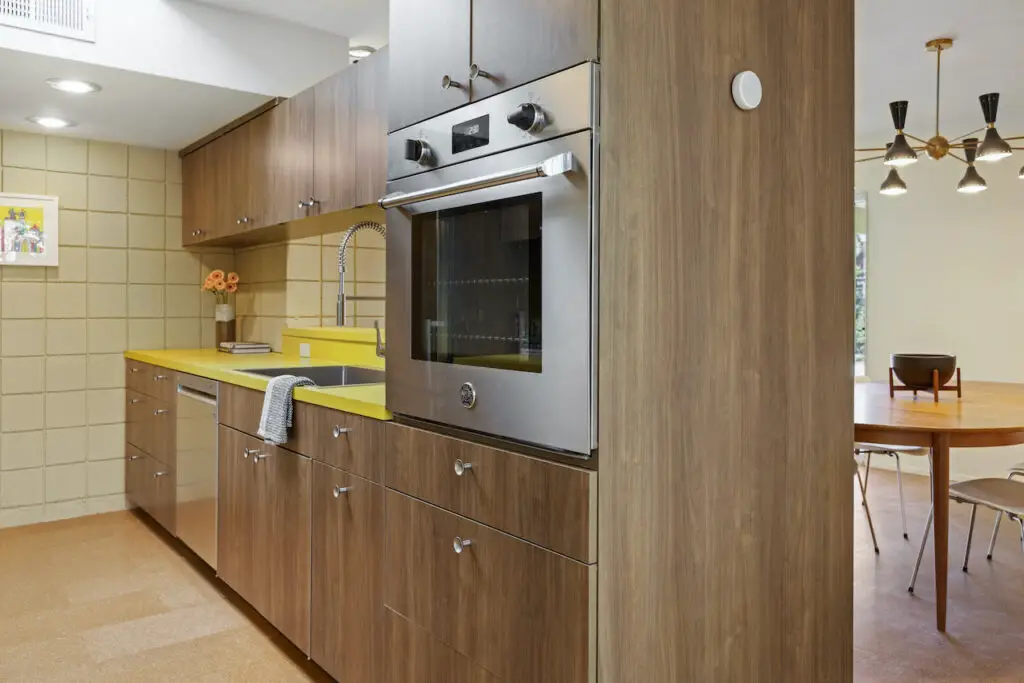
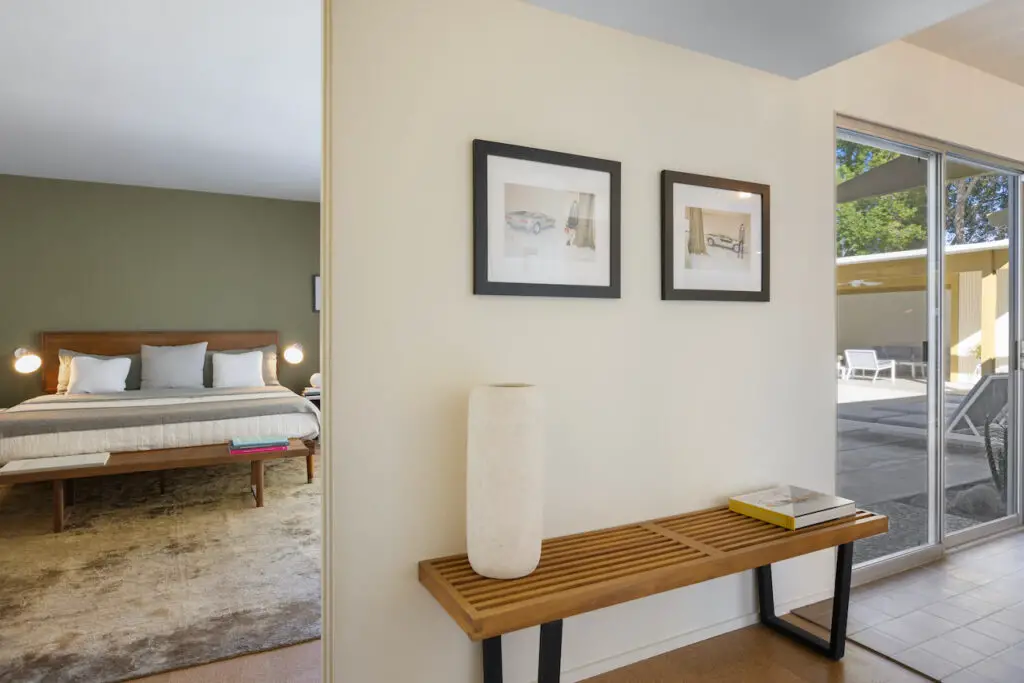
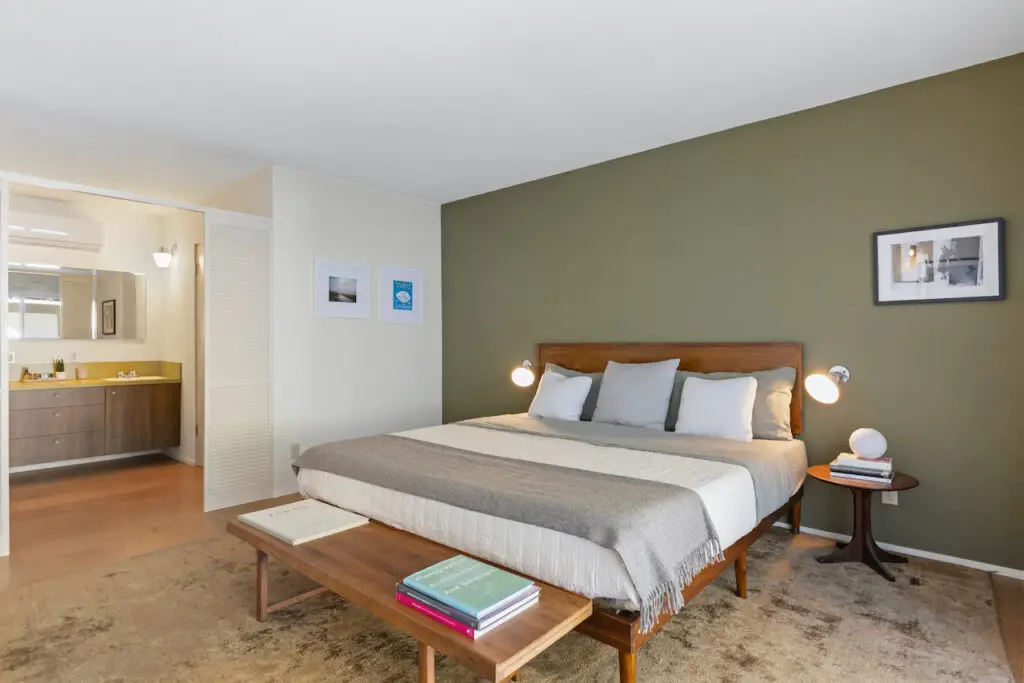
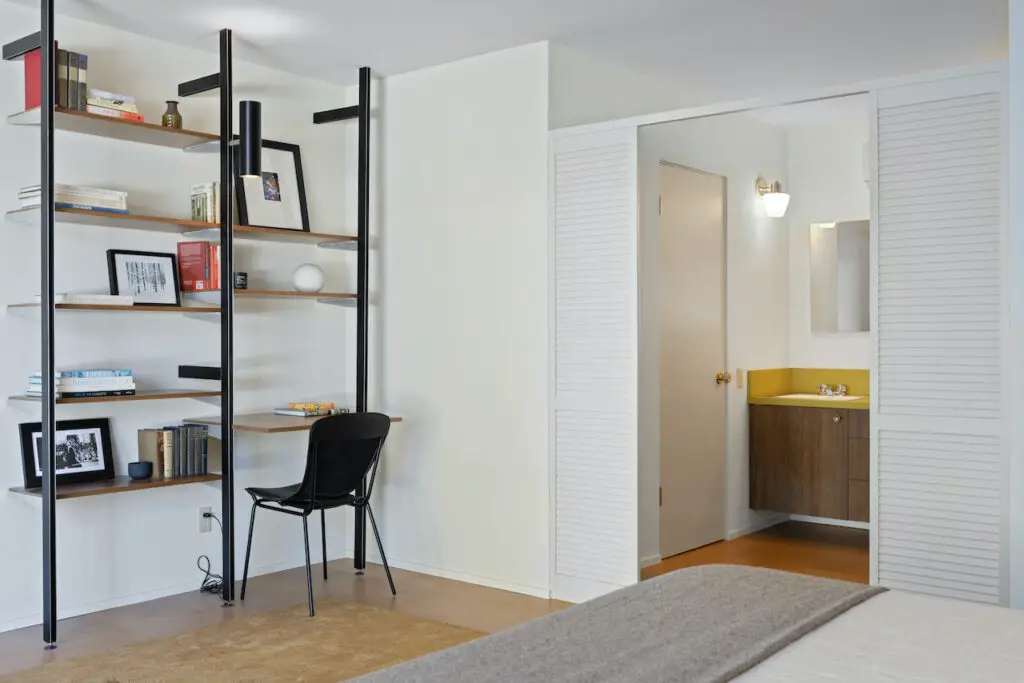
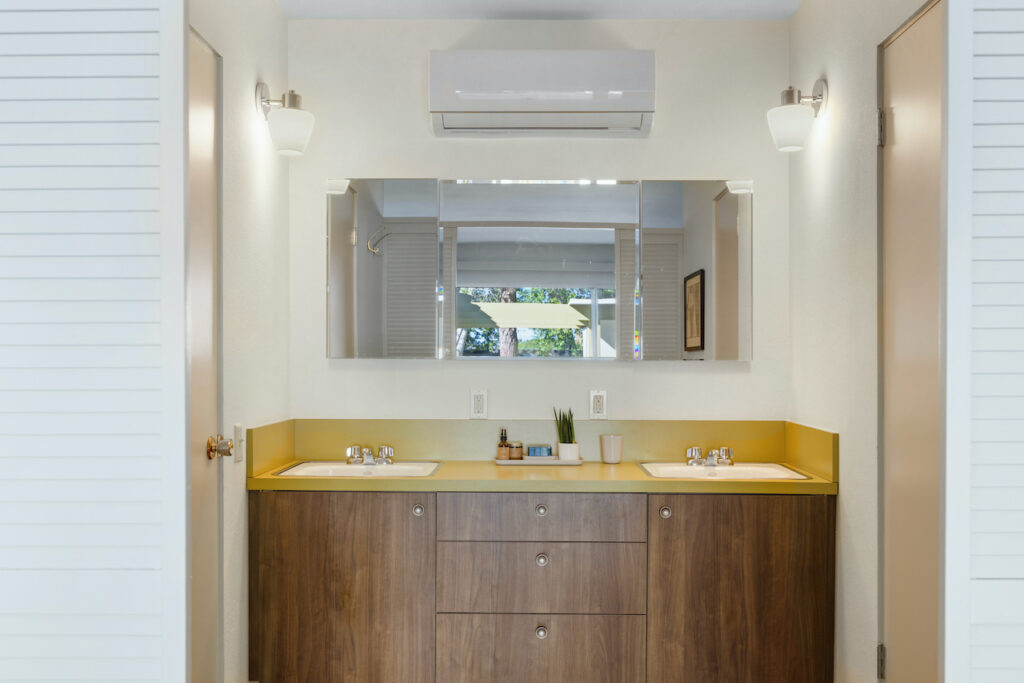
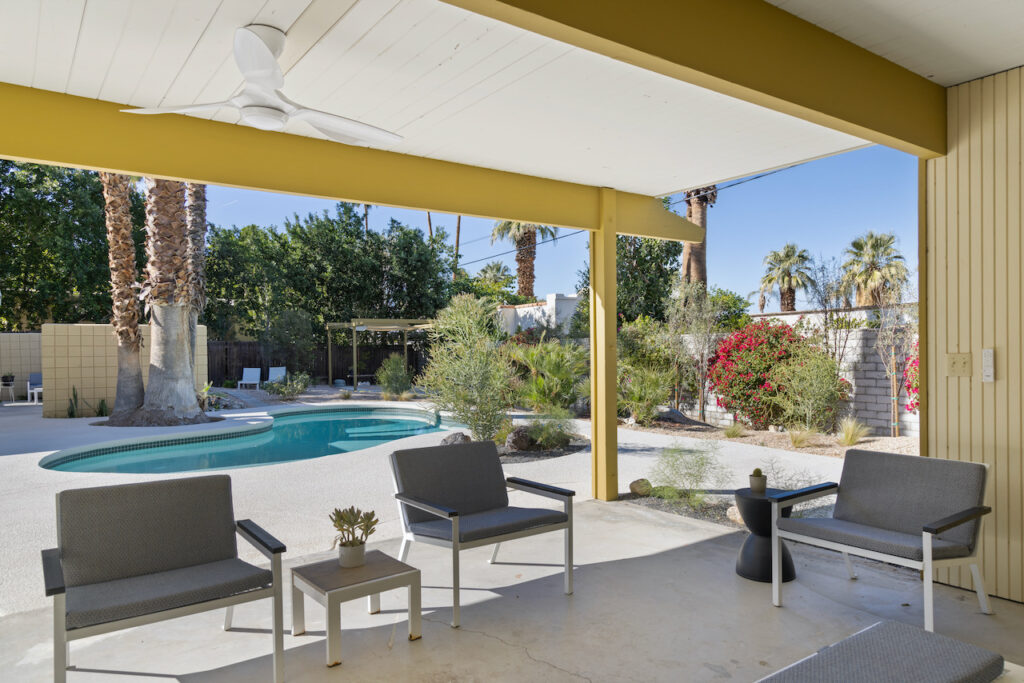
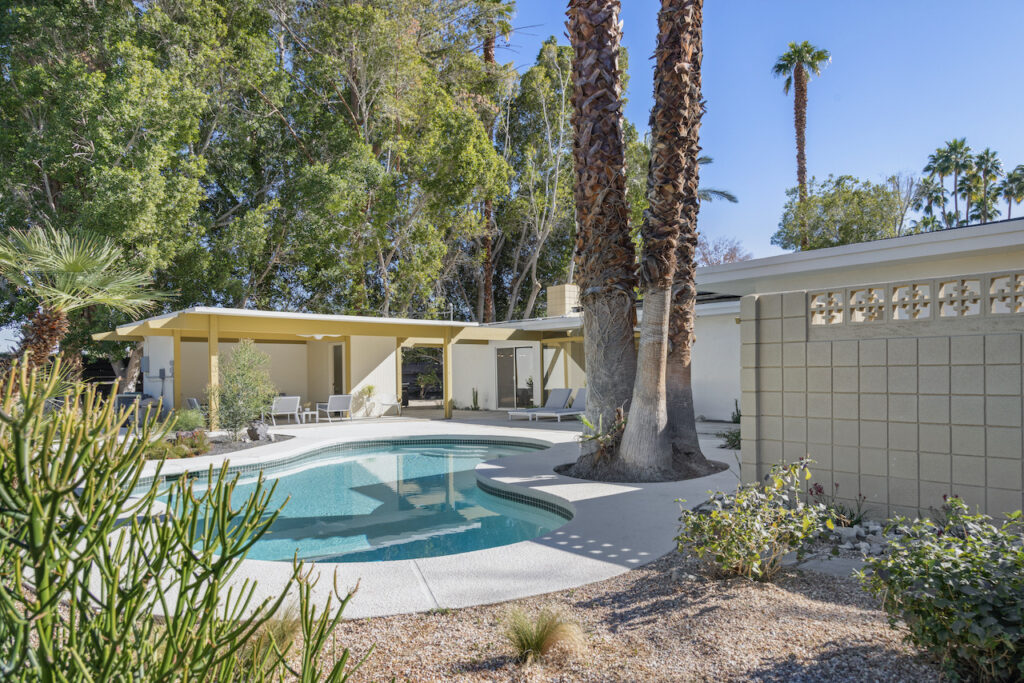
Photos by Sandy Swett
